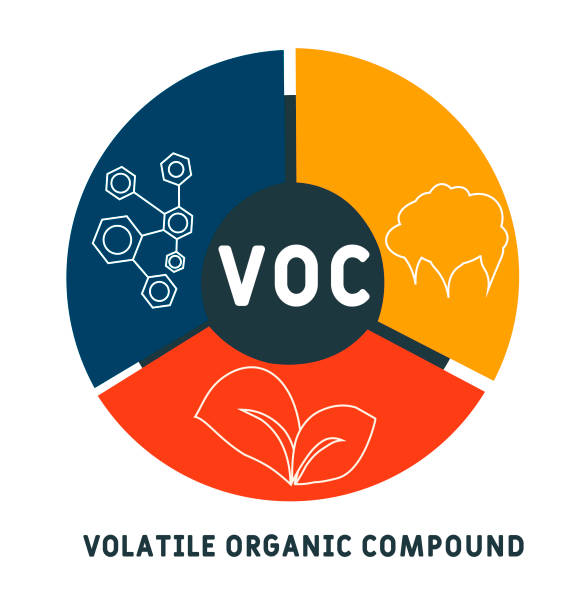Volatile organic compound, or VOCs, are chemicals that easily become vapors or gases. VOCs are emissions released by many common household products, including building materials. Some key things to know about volatile organic compounds:

• Sources of VOCs. First,VOCs come from a wide range of products including paints, varnishes, lacquers, furniture, insulation, structure materials, carpet, cleaning supplies and air fresheners. Common household products with high VOCs include paints, varnishes, lacquer thinners, paint stippers, wood preservatives and strippers, and aerosol sprays.
• Health effects. Then,exposure to high levels of VOCs can be irritating and cause health issues like headaches, dizziness, throat irritation or eye irritation. VOCs are also probable carcinogens and may contribute to the development of lung, liver or kidney cancer over time with chronic exposure. VOCs exposure is particularly concerning for children, elderly, asthmatics and those with other respiratory issues.
• Regulations. Also,several regulations aim to limit VOC levels in products to reduce health risks.
• Reducing exposure. Some effective ways to decrease VOC exposure include: choosing low-VOC or zero-VOC products; using natural and plant-based materials; increasing ventilation; minimizing unnecessary use of spray aerosols, paints and solvents; DIY air purifiers; and monitoring indoor air quality.
• Testing methods. The main methods for determining VOC levels in products include:
› Gas chromatography/mass spectrometry (GC/MS) – Separates and identifies different chemicals in a sample which can then be quantified. Considered the gold standard method.
› Infrared spectroscopy (IR) – Measures the infrared light absorption to identify chemical bonds. Faster and less expensive than GC/MS but can produce false positives.
› Headspace GC/MS – Introduces volatile compounds from a sample into the gas phase so they can be analyzed by GC/MS. Used for products with high non-volatile solids like flooring, furniture and building materials.
› Enclosure testing – Measures emissions from products in a controlled chamber over time. Provides a more realistic assessment of long-term exposure from products compared to one-time testing methods. Often used for certifications like Greenguard.
In summary, volatile organic compound refer to the gases emitted by common household products and materials. VOCs can negatively impact health, especially with chronic exposure in tightly sealed, poorly ventilated spaces. Regulations aim to limit VOC levels in products, and reducing exposure through lower-VOC options, increased ventilation, and monitoring indoor air quality can help minimize health risks. Understanding VOCs, testing methods, sources and health effects helps people make informed choices to keep the air they breathe clean.

